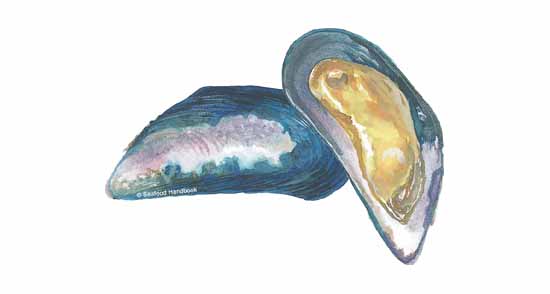Mussel, Blue

At one time held in low esteem, the blue mussel has become an aquaculture and culinary success story. While they grow wild, mussels are also farmed in Europe and on both coasts of North America. Maine is the largest U.S. producer, but the domestic market also draws farmed mussels from Canada’s Prince Edward Island and lesser amounts from China and South America. Washington is the Pacific Coast’s major supplier of farmed blue mussels. Wild mussels are found in the intertidal zone on rocks and pilings and in beds to depths of 30 feet. Mussels are farmed on ropes or in mesh tubes suspended from rafts. Off-bottom techniques reign, owing to quick growth, low predation, reduced sand accumulation, better taste and higher meat yield. Bottom-cultured mussels are sustainably grown, have a bold flavor due to increased nutrient and mineral levels from the ocean’s floor, a strong shell and high meat-to-shell ratio. Cultivated mussels are harvested at a shell size of 2 to 3 inches. They cost more than wild but are usually worth the extra price. To distinguish from wild mussels, check the shell. Farmed have thin, dark shells; wild have thicker, silvery shells.
| Calories: | 86 |
| Fat Calories: | 20 |
| Total Fat: | 2.2 g |
| Saturated Fat: | 0.4 g |
| Cholesterol: | 28 mg |
| Sodium: | 286 mg |
| Protein: | 11.9 g |
| Omega 3: | 0.5 g |
- Bake
- Boil
- Broil
- Fry
- Grill
- Pate
- Poach
- Saute
- Smoke
- Steam
Live
Fresh: Meats
Frozen: Whole-shell (steamed), Halfshell (steamed), Meats (steamed), Blocks (meats)
Value-added: Marinated meats, Smoked meats, Pickled meats, Frozen (breaded or battered meats), Canned meats (stews)






